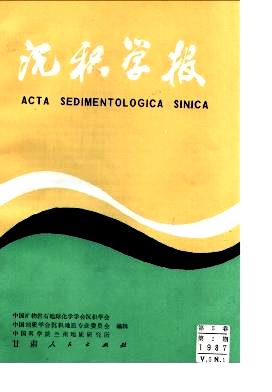SEDIMENTARY ENVIRONMENT OF THE JURASSIC COAL-BEARING ROCKS IN THE QILIAN COAL FIELD, QINGHAI
- Received Date: 1984-08-02
- Publish Date: 1987-03-10
Abstract: There are Muli, Jiancang, Wailihada and Roshui Coalmines in the Muli coal-bearing field, Qinghai. Coal-bearing sequences corresponding to "Qing-Gan Depression" were deposited in an uneven subsidence basin, being formed under the strengthening of geo-crust activity after the Triassic period. The grain size of coal-bearing sediments in the river environment of Middle-Lower Jurassic gradually becomes coarse to fine from bottom to top, but the Upper Jurassic shows fine grain size in the lower part and coarse in the upper part, reflecting a lacustrine environment. The subsidence basin is relatively closed down and the thickness of sediments alters a lot. The petrological changes and characteristics of grain-size distribution are as follows : 1. Sediments of river facies and lacustrine-coastal facies are medium or coarse sandstones with Type A distribution, containing pebbled sandstone and 5 % matrix. 2. Sediments of shallow-lacustrine facies and river-point-bar facies are fine sandstones with Type B, C, D distribution, and most of them are matrix-bearing sandstones (5-20%matrix). 3. Sediments of transitional facies (from the river point bar to the muddy swamp of back bar) are coarse silty sandstones with Type E distribution and most of them are matrix sandstones (20-50% matrix). 4. Sediments of deep lacustrine facies and peat- swamp facies mostly consist of materials 0.03mm ≈ 5 φ in diameter. The river-facies sediments of the lower part of Middle Lower Jurassic are the main portion of the coal-bearing sepuence. So the various coal mines in the Qilian coalfield can be contrasted with each other and the way of looking for coal in future is to find out subsidence basins of NWW-SEE extension along syncline in this area.
| Citation: | Luan Shaokun. SEDIMENTARY ENVIRONMENT OF THE JURASSIC COAL-BEARING ROCKS IN THE QILIAN COAL FIELD, QINGHAI[J]. Acta Sedimentologica Sinica, 1987, 5(1): 132-136. |






 DownLoad:
DownLoad: